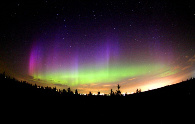 The
Northern Lights
The
Northern Lights
Polar lights (aurora polaris) are a natural phenomenon found in both the northern and southern hemispheres that can be truly awe inspiring. Northern lights are also called by their scientific name, aurora borealis, and southern lights are called aurora australis.
 The
Grand Canyon
The
Grand Canyon
Vast, magnificent and inarguably beautiful, the Grand Canyon is easily Arizona’s most distinguishable landmark – and a natural wonder that you simply have to see to believe. Stretching 277 miles from end to end, steep, rocky walls descend more than a mile to the canyon’s floor, where the wild Colorado River traces a swift course southwest.
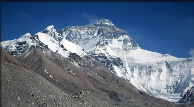 Mount
Everest
Mount
Everest
Mount Everest is located in the Himalayas and is the highest mountain in the world!
It is 8848meters high and is named after sir George Everest.
Mount Everest attracts experienced mountaineers and is considered one of the hardest climbs! Although many have climed to its top, the first to do so was Tenzing Norgay & Edmund Hillary.
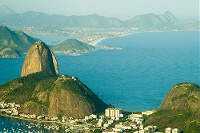 The
Harbor At Rio de Janeiro
The
Harbor At Rio de Janeiro
It took the Portuguese explorer, Gonçalo Coelho, three months to sail from Lisbon, Portugal, to the new world. On August 17th, 1501, he arrived off the coast of what we now call Brazil. He and his small fleet of three caravels (small, maneuverable sailing ships) began working their way along the seaboard, mapping the shoreline of South America. On January 1st, 1502, the ships reached a break in the seaside that seemed to be the entrance to an enormous river. The bay they found was spectacularly surrounded by huge, oddly-shaped mountains that astounded the European explorers. Taking a cue from the date on which they'd found this amazing harbor, they named it the "January River," or Rio de Janeiro.
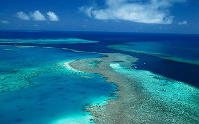 Great Barrier Reef
Great Barrier Reef
Australia's Great Barrier Reef is considered to be the world's largest reef system. It is made up of over 2,900 individual reefs, 900 islands and covers an area of 133,000 square miles (344,400 sq km). It is also one of the Seven Natural Wonders of the World, a UNESCO World Heritage Site and it is the world's biggest structure made out of living species. The Great Barrier Reef is also unique in that it is the only living organism that can be seen from space.
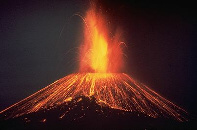 Paricutin
Paricutin
The Paricutin eruption took place between February 1943 and February 1952.
The Paricutin volcano grew out of a cornfield.
The worst of Paricutin's volcanic activity, took place in 1943, with its lava rising to about 50 feet below the crater's rim.
The Paricutin volcano now stands at exactly 1,345 feet above the ground and 9,210 feet above sea level.
It hardened lava is covers about 10 square miles, its volcanic sand (unconsolidated fragments of volcanic material) covers about 20 square miles
The type of eruption which happened at Paricutin is called a Strombolian eruption, which means it gushed basaltic lava, and exploded from a single vent.
Nearly 1000 people died following one of its last major eruptions in 1949.
Paricutin is situated about 200 miles west of Mexico City, in the state of Michoacán, Mexico.
Ashes from the volcano fell as far as Mexico City.
The Paricutin is part of the Volcanic Axis, a.k.a., "The Transversal", a
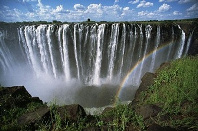 Victoria falls
Victoria falls
David Livingstone, the Scottish missionary and explorer, is believed to have been the first European to view Victoria Falls on 16 November 1855 from what is now known as Livingstone Island, one of two land masses in the middle of the river, immediately upstream from the falls on the Zambian side.[1] Livingstone named his discovery in honour of Queen Victoria, but the indigenous name, Mosi-oa-Tunya—"the smoke that thunders"—continues in common usage as well. The nearby national park in Zambia, for example, is named Mosi-oa-Tunya,[2] whereas the national park and town on the Zimbabwean shore are both named Victoria Falls.[3][4] The World Heritage List officially recognizes both names.[5]
In 2013 the government of Zimbabwe declared its intention to officially rename the falls "Mosi-oa-Tunya", citing continuity with other renamings such as Harare (from Salisbury), and Zimbabwe (from Rhodesia).[6]
